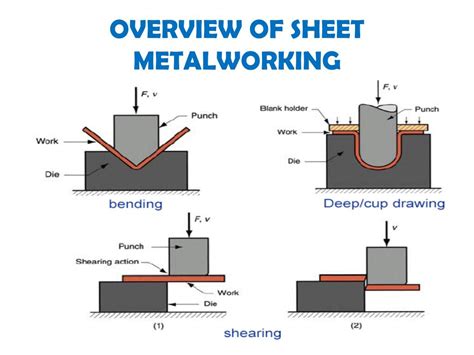about sheet metal Sheet metal is metal formed into thin, flat pieces, usually by an industrial process. Thicknesses can vary significantly; extremely thin sheets are considered foil or leaf, and pieces thicker than 6 mm (0.25 in) are considered plate, such as plate steel, a class of structural steel. $45.99
0 · what is sheet metalworking
1 · types of metal sheets
2 · steel sheet price per kg
3 · sheet metal types list
4 · sheet metal types and grades
5 · sheet metal size chart
6 · sheet metal characteristics
7 · metal sheets at screwfix
Box plots, or box-and-whisker plots, are a visual tool used to represent the distribution of a data set. This type of graph shows key statistics of your data, including the median, quartiles, and outliers.Use Code 7: (a) for a normal distribution from a plan, including a traditional IRA, section 401(k), or section 403(b) plan, if the employee/taxpayer is at least age 59 1/2; (b) for a Roth IRA conversion if the participant is at least age 59 1/2; and (c) to report a distribution from a life .
Sheet metal is generally composed of thin and flat sheets of metallic material. Its versatility makes it very useful for a broad range of applications and manufacturing processes.
Sheet metal is metal formed into thin, flat pieces, usually by an industrial process. Thicknesses can vary significantly; extremely thin sheets are considered foil or leaf , and pieces thicker than 6 mm (0.25 in) are considered plate, such as plate steel, a class of structural steel . Sheet metal is generally composed of thin and flat sheets of metallic material. Its versatility makes it very useful for a broad range of applications and manufacturing processes.Sheet metal is metal formed into thin, flat pieces, usually by an industrial process. Thicknesses can vary significantly; extremely thin sheets are considered foil or leaf, and pieces thicker than 6 mm (0.25 in) are considered plate, such as plate steel, a class of structural steel. Sheet metal is metal that has been formed into thin, flat pieces, usually through an industrial process. It is generally produced in sheets less than 6 mm thick. Sheet metal is one of the fundamental forms used in metalworking, and it .
Also known as sheet metal fabrication, sheet metal forming uses metal sheets to make various products and components. The metal sheets are formed and cut into the necessary shape and size via many different processes and equipment, which we’ll cover a .
The article gives an overview of sheet metal. This includes standard measurements, materials and different forming methods.What is Sheet Metal? Sheet metal is an industrial process that forms thin, flat pieces of metal, such as steel and tin, into coils. In the U.S., the thickness of sheet metal is typically specified by its gauge, which ranges from 30 gauge to about 7 gauge.
junction box lighting circuit diagram
what is sheet metalworking
Discover everything about sheet metal, from types and applications to industries that use it and CNC processing methods. Learn how sheet metal is integral to modern manufacturing. Sheet metal is required across many industries, from automotive to aerospace, construction to electronics. The wide range of materials it offers, such as aluminum, steel, and copper, lends to its versatility, each providing unique .Sheet metal manufacturing is the process of creating sheet metal parts by cutting, bending, and forming thin metal sheets into specific shapes and sizes. The process typically uses coating, cutting, bending, and assembly techniques.Sheet metal is metal formed into thin, flat pieces, usually by an industrial process. Thicknesses can vary significantly; extremely thin sheets are considered foil or leaf , and pieces thicker than 6 mm (0.25 in) are considered plate, such as plate steel, a class of structural steel .
Sheet metal is generally composed of thin and flat sheets of metallic material. Its versatility makes it very useful for a broad range of applications and manufacturing processes.Sheet metal is metal formed into thin, flat pieces, usually by an industrial process. Thicknesses can vary significantly; extremely thin sheets are considered foil or leaf, and pieces thicker than 6 mm (0.25 in) are considered plate, such as plate steel, a class of structural steel.
Sheet metal is metal that has been formed into thin, flat pieces, usually through an industrial process. It is generally produced in sheets less than 6 mm thick. Sheet metal is one of the fundamental forms used in metalworking, and it . Also known as sheet metal fabrication, sheet metal forming uses metal sheets to make various products and components. The metal sheets are formed and cut into the necessary shape and size via many different processes and equipment, which we’ll cover a .
The article gives an overview of sheet metal. This includes standard measurements, materials and different forming methods.What is Sheet Metal? Sheet metal is an industrial process that forms thin, flat pieces of metal, such as steel and tin, into coils. In the U.S., the thickness of sheet metal is typically specified by its gauge, which ranges from 30 gauge to about 7 gauge.
Discover everything about sheet metal, from types and applications to industries that use it and CNC processing methods. Learn how sheet metal is integral to modern manufacturing. Sheet metal is required across many industries, from automotive to aerospace, construction to electronics. The wide range of materials it offers, such as aluminum, steel, and copper, lends to its versatility, each providing unique .
junction box on concrete wall

types of metal sheets
junction box on wood beam
steel sheet price per kg
G-code and M-code are fundamental to the operation of CNC machines, providing detailed instructions for machine movements and auxiliary functions. Understanding and optimizing these codes can significantly enhance machining efficiency, precision, and overall productivity.
about sheet metal|metal sheets at screwfix